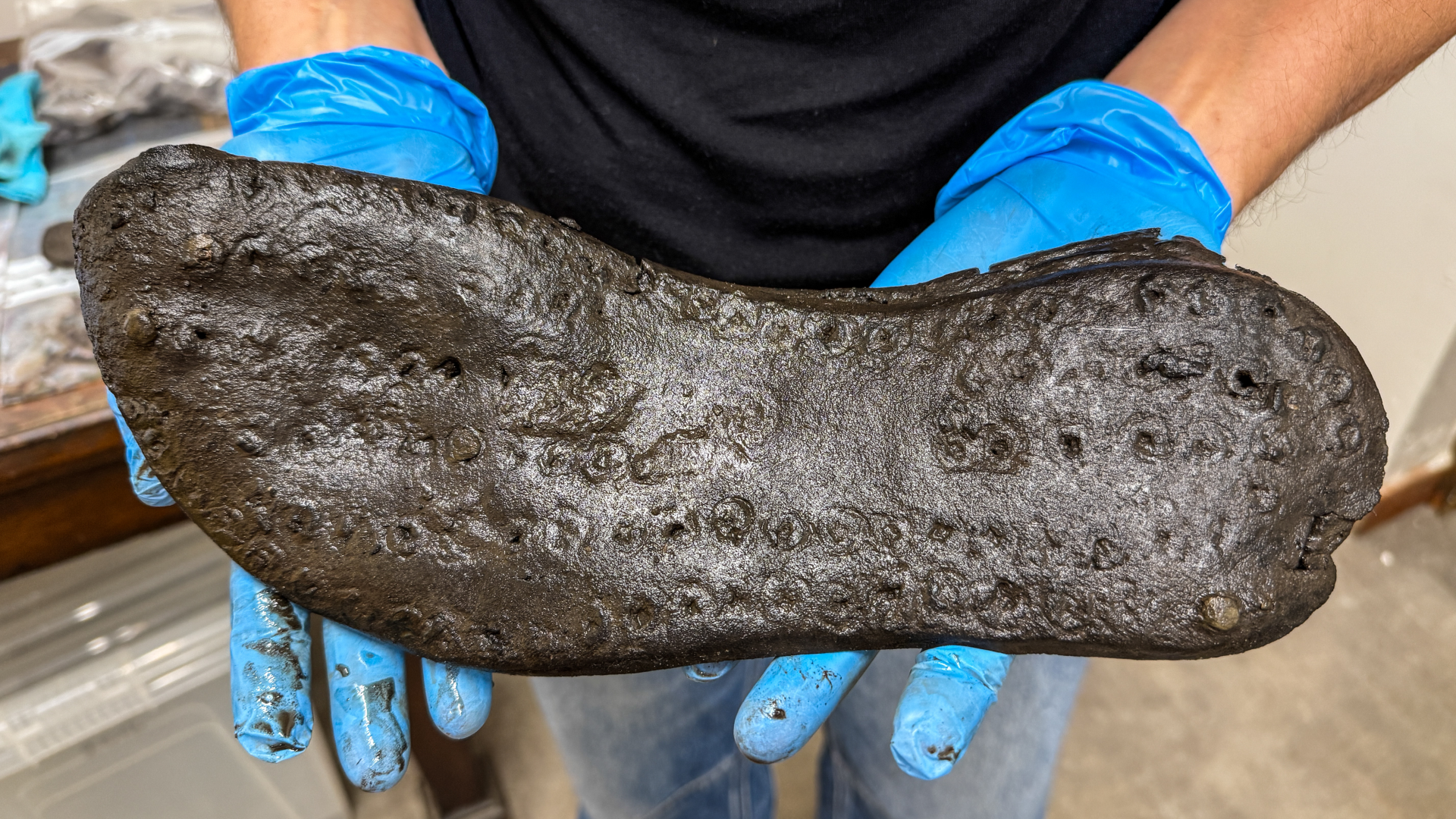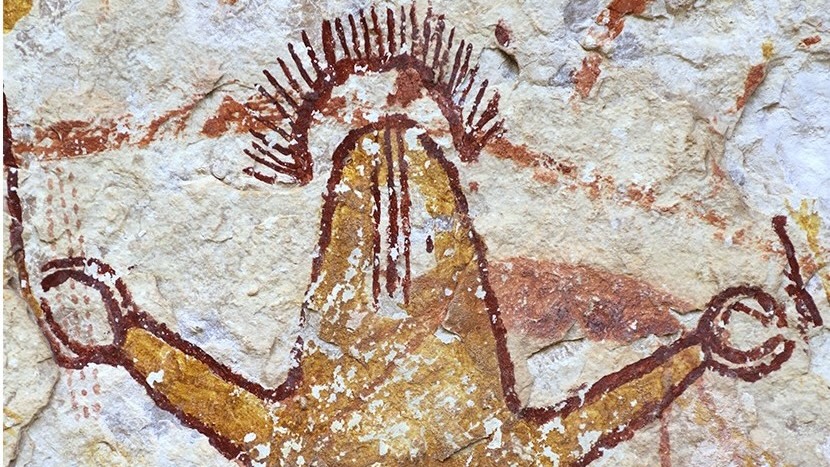8 ancient Roman shoes of 'exceptional size' discovered at Roman fort near Hadrian's Wall
Eight XXL leather shoes have been recovered from Magna, a Roman-era fort along Hadrian's Wall.

Archaeologists excavating a Roman-era fort in northern England have unearthed several enormous ancient leather soles that measure more than 11.8 inches (30 centimeters) long.
The finds add to the archaeologists' growing collection of supersized ancient footwear found at the ancient fort, known as Magna. The researchers now have eight of these extra-extra-large shoes — a quarter of the total found at the site.
"I think there is something very different going on here at Magna," Elizabeth Greene, an archaeologist at Western University in Ontario, Canada and a specialist in ancient shoes, said in a statement. "Even from this small sample uncovered, it is clear that these shoes are much larger on average than most of the Vindolanda collection."
The shoes were discovered at Magna — also known as Carvoran — a fort along Hadrian's Wall, which was built around A.D. 122 to demarcate the northern extent of the Roman Empire. Magna is situated about 7 miles (11 kilometers) west of Vindolanda, the large Roman auxiliary fort that's well known for the remarkable preservation of writing tablets, military medals and leather shoes.
In May, archaeologists unearthed an enormous leather shoe while digging at the bottom of one of Magna's "ankle-breaker" defensive ditches — narrow, deep trenches that, when full of water, could cause an enemy soldier to trip and snap their ankle. The waterlogged conditions in the ditch created an oxygen-free environment that preserved the leather shoe. The sole of the giant shoe measured 12.6 inches (32 cm) long, which is the equivalent of a men's U.S. 14 or U.K. size 13 shoe today. For context, the average U.S. men's shoe size is around 10.5, while basketball player LeBron James wears a size U.S. 15 and Michael Jordan wears a U.S. 13.5.
Further excavations revealed the Magna ditch contained a total of 32 shoes in a range of sizes, from children's to adults', which adds to the collection of more than 5,000 ancient leather shoes found at the nearby fort of Vindolanda, according to the statement.
Related: Roman-era 'fast food' discovered in ancient trash heap on Mallorca
Get the world’s most fascinating discoveries delivered straight to your inbox.

But the Magna shoes live up to their name — 25% of the shoes recovered to date are more than 11.8 inches long. One of them, measuring 12.8 inches (32.6 cm) long, is now the largest shoe on record in the Vindolanda collection. By contrast, only 16 of the 3,704 measurable shoes from the Vindolanda fort — just 0.4% — were over 11.8 inches long.
Archaeologists are unsure why Magna's shoes are so large.
This discovery "reminds us that not every population was the same, that wide variations between the regiments and people who served along Hadrian's Wall could be cultural and physical," Andrew Birley, the director of excavations for the Vindolanda Trust, said in the statement.
Greene, who has measured every shoe in the Vindolanda collection, cautioned that direct comparisons between Magna and Vindolanda cannot yet be made, as the Magna leather has not yet gone through the conservation process, which can result in shrinkage of up to 0.4 inches (1 cm). But even taking this into account, Greene said, "it still means these shoes are very large indeed."
"We can only celebrate and marvel at the diversity and differences of these people if we can still see them in the archaeological data we gather today," Birley said.
Roman emperor quiz: Test your knowledge on the rulers of the ancient empire

Kristina Killgrove is a staff writer at Live Science with a focus on archaeology and paleoanthropology news. Her articles have also appeared in venues such as Forbes, Smithsonian, and Mental Floss. Kristina holds a Ph.D. in biological anthropology and an M.A. in classical archaeology from the University of North Carolina, as well as a B.A. in Latin from the University of Virginia, and she was formerly a university professor and researcher. She has received awards from the Society for American Archaeology and the American Anthropological Association for her science writing.
You must confirm your public display name before commenting
Please logout and then login again, you will then be prompted to enter your display name.
